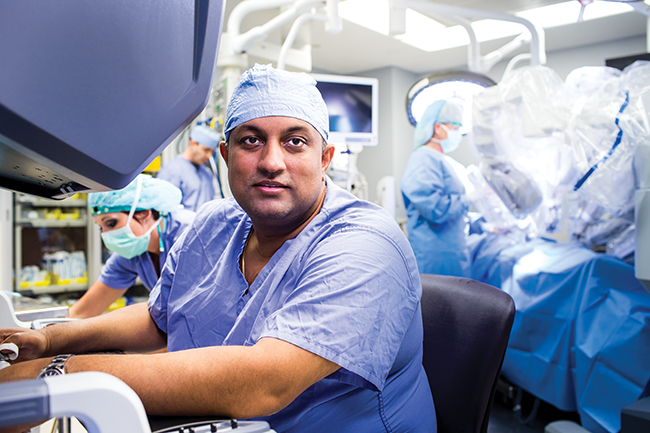More than 220,000 men will be diagnosed with prostate cancer this year alone, and more than 27,000 may not survive. Sounds scary, but with early detection and proper treatment, it doesn’t have to be.
For over 30 years, the Prostate-Specific Antigen (PSA) Test has been used as an indicator of high and low PSA levels in men. It was once thought that high levels of PSA — a protein produced by the prostate gland — were directly linked to prostate cancer. However, recent studies have shown that this test may not be a reliable indicator of cancer, as many other factors can cause fluctuations in a man’s PSA levels. This means that a diagnosis of cancer based solely on a PSA test can lead to overdiagnosis or overtreatment.
Because prostate cancer often grows slowly, many urologists are now employing active surveillance to prevent overdiagnosis or overtreatment.
Active surveillance involves monitoring a patient’s symptoms throughout a series of tests to see if irregularities develop. Active Surveillance is typically used for patients with low grade cancers, basing the need for treatment on observation of the cancer and its growth pattern. This approach lowers the risk of a “blanket” treatment and is allowing doctors to treat patients on a more personalized level.
If you have any of the following symptoms, consult your physician:
- Frequent urination
- Trouble urinating, pain, burning, or weak urine flow
- Blood in the urine or semen
- Pain in the lower pelvic area
- Pain in the lower back, hips, or upper thighs
- Weight loss or loss of appetite
Treatment
At Erlanger Health System, doctors use a variety of treatments for prostate cancer. These include:
- Cryotherapy (freezing tissue for removal)
- Hormone therapy
- Radiation therapy
- Prostatectomy with the da Vinci robot®
- Active surveillance
The da Vinci robot takes minimally invasive surgeries to a new level, reducing hospitalization and recovery time. It allows for a “hands off” approach — providing doctors with a better view and steadier grip.
Urologic Surgeon Christopher Keel, D.O., currently works with the da Vinci robot® XI. “When I was introduced to the surgical robot, the training wheels came off. I just fell in love with the technology,” Dr. Keel says. And because Erlanger is a high-volume center for prostatectomies, that technology is used a lot. “Between Dr. Armar Singh and me, we perform 300–400 major urologic cancer procedures per year — about half of those using the robot.”
Survivorship
Because diagnoses are happening earlier, treatments can too. Urologists are practicing a more comprehensive approach to care — treating patients as individuals and guiding them through every step to wellness.
Fertility can be an issue for cancer survivors as men are diagnosed earlier on in life. They may need to undergo treatment before they’ve had a chance to start a family and need guidance in banking sperm pre-op. Complications, such as ED and urinary incontinence, can also develop after prostate cancer treatment. These difficulties can have a lasting effect on a survivor’s social interactions and relationships. Some men may suffer depression, as well, due to the limited engagement with others.
But urologist Anand Shridharani, M.D., aims to keep those complications and side effects to a minimum. “My goal is to minimize the impact cancer treatment has on a patient’s quality of life,” Shridharani says.
The sooner you get a diagnosis, the sooner you can be treated. Talk with your doctor about getting a screening for prostate cancer. Don’t have a doctor? Book an appointment online at Men’s Urologic Health Practice or call 423-778-4MEN.







